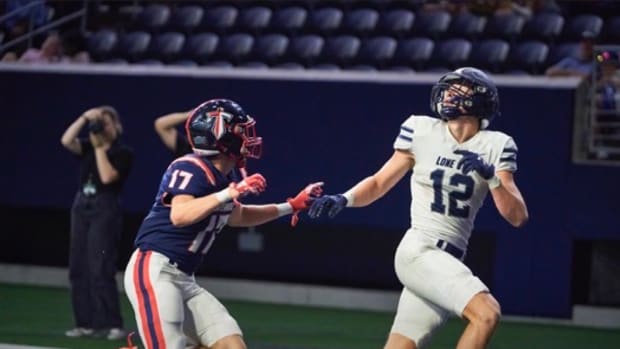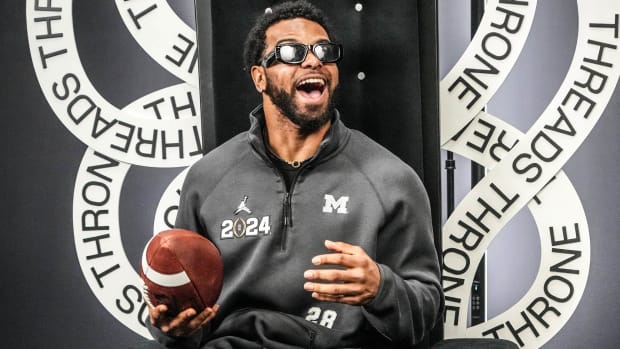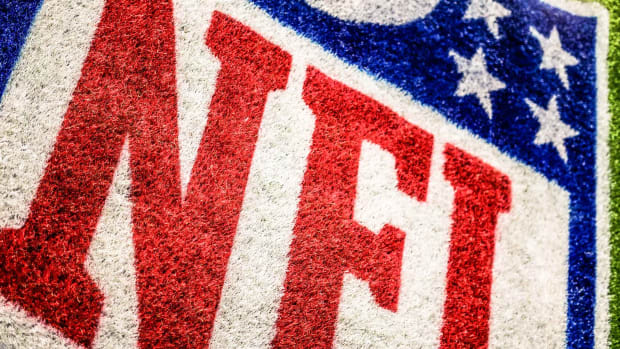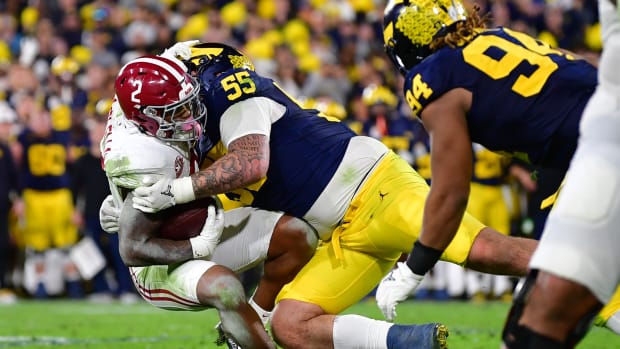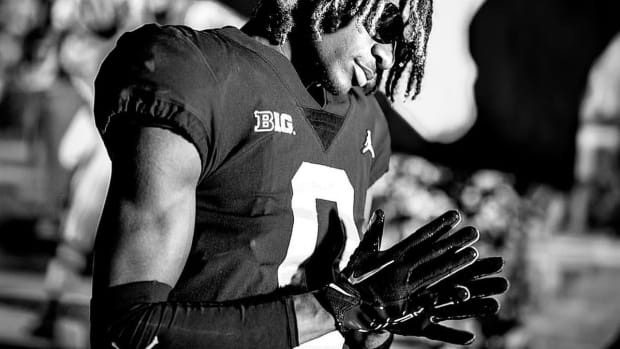Will Michigan's Wide Receivers Reach Their Potential In 2020?
In the six full recruiting classes Jim Harbaugh has had at Michigan (since 2016), he has signed three Top 10 classes (No. 5 in 2017, No. 8 in 2016 and No. 8 in 2019) and is poised for another one in 2021 (currently No. 6).
In his era, he has brought in six Top 250 wide receivers, including five-star Donovan Peoples-Jones in the Class of 2017, and high-end four-stars AJ Henning (No. 101, Class of 2020), Tarik Black (No. 116, 2017), Kekoa Crawford (No. 118 in the 2016 class) and Nico Collins (No. 138, 2017).
Despite exceptional recruiting at the position, Michigan hasn't had a lot to show for it at wide receiver. The Wolverines' best season was, arguably, 2015 when Brady Hoke holdovers Amara Darboh (58 catches) and Jehu Chesson (50) combined for 108 receptions, 1,491 yards and 14 touchdowns.
Ronnie Bell's and Collins' 85 catches for 1,487 yards and eight scores a year ago is probably the second-best performance by a receiving duo, but their combined numbers are often put up by a single target - last year 30 wide receivers had 75 catches or more and 41 had 1,000 yards or more across college football.
Michigan experienced its most balanced receiver haul of the Harbaugh era in 2019, with four wideouts catching 25 balls or more but there were no individual standouts - Bell and Collins each only had one 100-yard game, considered the standard for a No. 1 target.
Receivers under Harbaugh have had moments, but no one has strung together a truly great season nor has the entire corps ever belonged in the conversation as one of the Big Ten's best after a given campaign. The closest the cohort probably came was 2018, when the four four-stars of the Class of 2017 - Peoples-Jones, Black, Collins and Oliver Martin - combined for 100 receptions, 1,404 yards and 15 touchdowns, but as a group, they regressed in 2019.
Martin transferred to Iowa after the 2018 season, Peoples-Jones left for the NFL following a disappointing junior year (at least from a production standpoint) and Black has transferred to Texas, leaving only Collins behind from that 2017 class.
The good news? Collins has proven to be the best of the bunch, with the full arsenal of physical skills at his disposal. And if given enough targets - he had 75 last season while Darboh, for comparison, had 101 in 2016 - Collins could actually be one of college football's top wide receivers in 2020.
Bell, who has overachieved from his two-star status, looks capable of being one of the best No. 2 receivers Michigan has ever had (think Marquise Walker to David Terrell, Jason Avant to Braylon Edwards, or Adrian Arrington to Mario Manningham), catching 56 balls for 903 yards and three touchdowns, moving the chains on 73.2% of his career receptions.
Bell is deadly on crossing routes and on scramble plays because of his ability to find open pockets in a defense and make good once he has possession - the rising junior had a team-best 474 yards after making a catch in 2019, 63% of his total yardage coming on RAC (run-after-catch). By comparison, Collins accrued just 33% of his yards after the catch.
Bell did drop too many balls last year, a team-high nine targets or 16% of the time he got his hands on the ball, and must be accountable in all situations.
That should come - he was never supposed to be the top receiver on the team, as he was in 2019 with a team-high 48 grabs - and with his run-after-catch ability he should thrive in the underneath and screen concepts Michigan employed more often in October and November.
Where Michigan stands to make the biggest gain is at the third and fourth receiver positions, sophomores Giles Jackson and Mike Sainristil seemingly both capable of becoming lethal slot receivers.
Jackson had at least two receptions in each of Michigan's final four games, catching nine of his 10 season grabs in those contests. Sainristil was not as productive late, four his eight season receptions coming in the last four U-M contests, but he made plays when he got the ball, half his grabs going for 15+ yards during the year.
Those two both have the stop-and-start acceleration, sharp cutting ability and wiggle to take advantage of defenders (whether they are true slot corners, safeties or hybrid linebackers): 41% of their combined yards a year ago came after the catch.
Michigan also really likes what it has in sophomore Cornelius Johnson and incoming freshmen AJ Henning and Roman Wilson. But then, talent has never been the issue for the receivers: opportunity, getting on the same page with the quarterback(s) and making the most of chances has.
Quarterbacks typically have a favorite - Devin Gardner had Jeremy Gallon, John Navarre had Braylon Edwards, Tom Brady had David Terrell - but that's often because one receiver is significantly better than the others. In years where two or more have had comparable skills, it's the responsibility of the quarterback to spread it around:
• In 2000, Terrell and Walker combined for 116 catches, Terrell catching 58% and Walker 42%.
• In 2007, Manningham and Arrington had 139 catches, Manningham catching 52% and Arrington 48%.
• In 2010, Roy Roundtree and Darryl Stonum had 121 catches, Roundtree making 60% of the grabs and Stonum 40%.
• In 2015, Darboh and Chesson had 108 catches, Darboh hauling in 54% and Chesson 46%.
This is a season where Collins looks like a bona-fide No. 1, Bell can be an outstanding complementary receiver, and both Jackson and Sainristil could be big-play threats in every passing situation, but until a quarterback emerges and proves capable of taking advantage of all the weapons at his disposal, there will be caution regarding the wide receivers.
